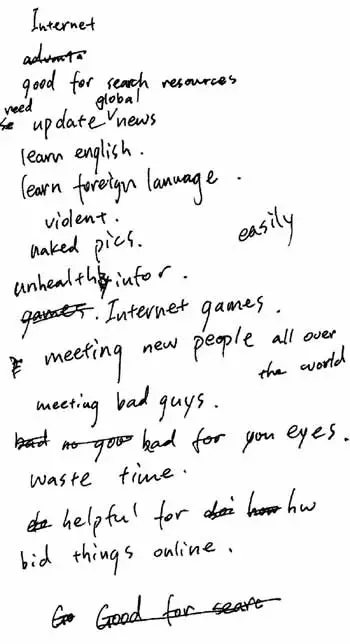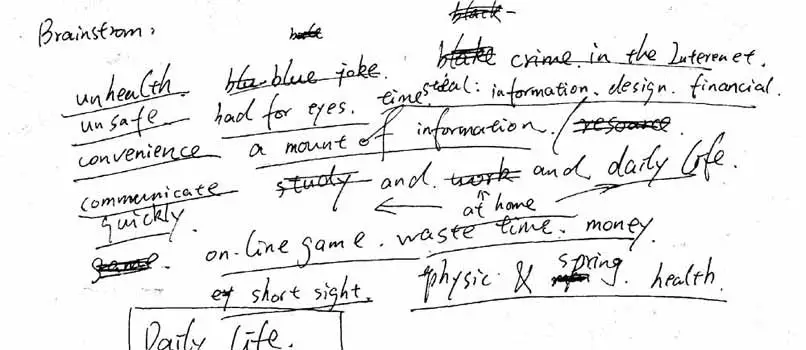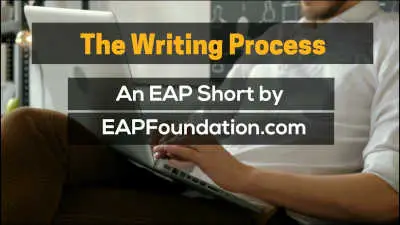Show AWL words on this page.
Show sorted lists of these words.


 







|
 Podcast is loading. Problems? Too slow? You can also access the Podcast by
clicking here.
Podcast is loading. Problems? Too slow? You can also access the Podcast by
clicking here.This message will disappear when then podcast has fully loaded.
After you have understood the title, the next step of the writing process is to generate ideas. The best way to do this is by a process called 'brainstorming'. The page gives information on what brainstorming is, as well as describing three useful brainstorming techniques, namely clustering, listing, and freewriting.
What is brainstorming?
Brainstorming is a technique which is used to get as many ideas as you can, as quickly as you can. The words 'many' and quickly' are important. A common mistake students make when brainstorming is to stop after writing down only a few ideas. This is not 'brainstorming'. As the word 'storm' suggests, it is something which should have much energy and power, leading to a flood of ideas. Although brainstorming may take some time, it will save you time in the long run. There is nothing worse than racing confidently into an essay then getting stuck for ideas halfway through (i.e. 'writer's block').
Clustering
Clustering, also called mind-mapping, is a visual brainstorming technique. It is especially useful for visual learners. The advantage of this technique is that ideas are organised on the page, making it easier to move to the outlining stage of the process. As a result, it is the most popular brainstorming method with students.
Below is an example of the clustering style of brainstorming. This was for a short (250 word) essay, written under exam conditions, with the title: 'Discuss the advantages and disadvantages of the internet'.
Example 1

Listing
Listing, as its name suggests, is a brainstorming technique in which you make a list of ideas. The advantage of this technique is that it enables ideas to be generated more quickly than with clustering, as the ideas can be written in any order.
Below are two examples of the listing style of brainstorming. Both are for the same title as above, namely 'Discuss the advantages and disadvantages of the internet'.
Example 2

Example 3

Freewriting
Freewriting is a brainstorming activity in which the writer writes anything they can about a topic, in continuous prose, hoping that one idea will lead to another. The advantage of this technique is that it might enable you to generate ideas when the other methods fail. However, it is not generally favoured by students of academic writing. It takes more time, and the writing you produce will be disorganised and will need to be discarded at the end. It is more useful when writing creative works such as stories. Try this method if you think this will be a good technique for you:
- Write the topic at the top of your paper.
- Write as much as you can about the topic. Include as many supporting facts, details, and examples as you can, but do not worry if you do not have many at this stage.
- After you have run out of ideas, reread your passage and circle/highlight the ideas which seem useful.
- Group the related ideas together, then use them to write an outline. If necessary, generate more ideas first using one of the methods on this page.
Checklist
Below is a checklist for this section.
| Item | OK? | Comments |
| I have used brainstorming to generate ideas for my writing. | ||
| I have used either clustering, listing or freewriting to brainstorm ideas. |
Next section
Read more about researching to support your ideas.
Previous section
Go back to the previous section about understanding the title.







